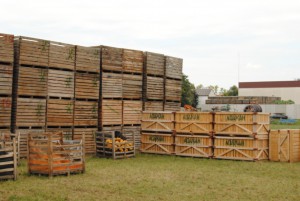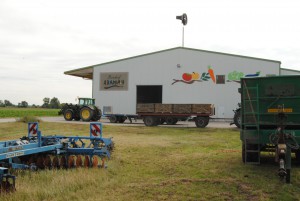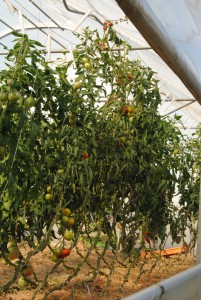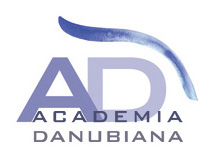 The ADAMAH project have been one of the Austrian projects that we visit on our first day on the Design Course. We’ve been introduced to the main ideas of the project by one of the family members of it, and it was quite interesting to see the different aspects of this successful idea.
The ADAMAH project have been one of the Austrian projects that we visit on our first day on the Design Course. We’ve been introduced to the main ideas of the project by one of the family members of it, and it was quite interesting to see the different aspects of this successful idea.
The main idea is that they “deliver boxes of biologic products to their clients”, in something that we can define as direct marketing. If at the first moment they delivered twenty boxes, mainly for friends, after 12 years they deliver about 6.000 boxes per week. With the biological production of 92 hectares area, they can produce 65 different crops, and they offer their clients hight quality biological food delivered home. This seems to be a good way to re.create relationships between producers and consumers, in new forms to see the economy.
 At the ADAMAH we could hear about other innovative techniques and forms to promote the local development with solidarity between producers and consumers. For instance, when they decided to invest in solar system panels, they sold a kind of bonus for the clients, financing the solar panels with social investments. As they produce more energy than is necessary for their production, they sell the surplus for the local government, and with this money they can re.pay their investors, their clients. But they pay only 80% of the bonus in currency, and the other 20% they pay with the products that they have, the food-boxes. There we can see this bonus as a complementary currency, used for the realization of this investment in renewable energy.
At the ADAMAH we could hear about other innovative techniques and forms to promote the local development with solidarity between producers and consumers. For instance, when they decided to invest in solar system panels, they sold a kind of bonus for the clients, financing the solar panels with social investments. As they produce more energy than is necessary for their production, they sell the surplus for the local government, and with this money they can re.pay their investors, their clients. But they pay only 80% of the bonus in currency, and the other 20% they pay with the products that they have, the food-boxes. There we can see this bonus as a complementary currency, used for the realization of this investment in renewable energy.
.
.
 Another point on the project is that they work as a collaborative solidarity network, re.builting chains of the food production. For instance, they produce the cereals in their farm and send them to local bakeries, as a result of this collaboration, they can include breads in the deliver box, gaining in diversity and quality of their services. In a similar idea, in one field they produce vegetables that can be used as animals food, they send this for their suppliers and receive back organic materials to treat the soil. They have economic relations with 200 local farmers, that can provide then with eggs, milk and chicken meat (that they don’t produce by themselves) and so, they can attend the demand of the clients for other biological products. This process is a gain-gain relationship between local producers, as ADAMAH can remunerate their suppliers better than a supermarket would do for the same product.
Another point on the project is that they work as a collaborative solidarity network, re.builting chains of the food production. For instance, they produce the cereals in their farm and send them to local bakeries, as a result of this collaboration, they can include breads in the deliver box, gaining in diversity and quality of their services. In a similar idea, in one field they produce vegetables that can be used as animals food, they send this for their suppliers and receive back organic materials to treat the soil. They have economic relations with 200 local farmers, that can provide then with eggs, milk and chicken meat (that they don’t produce by themselves) and so, they can attend the demand of the clients for other biological products. This process is a gain-gain relationship between local producers, as ADAMAH can remunerate their suppliers better than a supermarket would do for the same product.
.
.
 For the consumers, it is also a good idea join this project, not only for the commodity of receiving their biological food at home, for a stable price, but also because they receive informations about the development of the project, the local entrepreneurs in a constant process of support the local sustainable development.
For the consumers, it is also a good idea join this project, not only for the commodity of receiving their biological food at home, for a stable price, but also because they receive informations about the development of the project, the local entrepreneurs in a constant process of support the local sustainable development.
Even thought they are a private company and they are profit-orientated, this project and all this complex system that they’ve been implementing is a good example about the ways local development can be promoted, integrating producers between them and with their consumers. Maybe a good idea to implement, with some adaptations, in the new city of Aspern.
Key-words: ADAMAH, solidarity economy, supply chain, local production, cooperation
 Academia Danubiana
Academia Danubiana